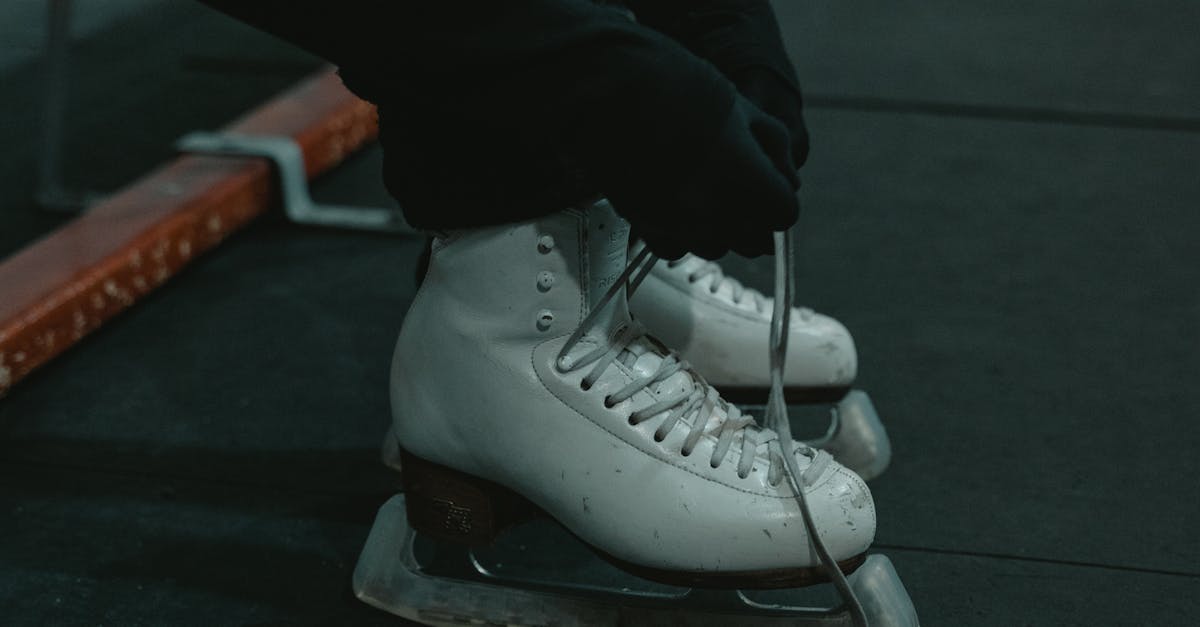
Fitting Boots
Table Of Contents
Fitting Boots
When it comes to outdoor adventures or daily activities, nothing can ruin your experience quite like uncomfortable boots. This is why so many enthusiasts prioritize finding the perfect boot fit. Whether you're hiking on rugged trails or simply going for a walk around the block, ensuring that your boots fit correctly can make all the difference. The right fit not only provides comfort but also enhances performance, preventing injuries and blisters that can arise from poorly fitting footwear.
Boot fitting is an art and a science that involves understanding the unique contours of your feet. Various factors, such as foot shape, arch height, and even personal preferences, play a crucial role in finding the perfect boot fit. It can be tempting to choose a pair based solely on style or brand, but the most important consideration should always be comfort and suitability. By taking the time to focus on boot adjustment and customization, you can ensure that your investment in footwear pays off in terms of both longevity and enjoyment.
Choosing the Ideal Boot for Your Activity
While considering finding the right footwear, selecting the right ski boot is important for top performance and comfort. All style requires tailored features that can enhance your experience. For example, if you are skiing, you will want shoes that provide superior support and durability, while casual wear may prioritize style over technical features.
Fit is another vital aspect to evaluate when picking your ski boot. The ideal boot should embrace your foot without causing discomfort. Remember that the shape of feet vary greatly, so trying on multiple options is recommended. In addition, consider features such as insulation that align with your specific requirements to ensure your footwear not only fits well but also performs effectively in various conditions.
Aspects to Think About When Picking Ski Boots
As you choosing ski boots, a person should think about the aspects that can influence performance. A suitable dimension is essential as it can determine your total experience on the slopes. Moreover, foot shape and volume are vital factors that can substantially affect how well the ski boots fit.
One more vital aspect to evaluate is the stiffness of the ski boot. Various levels of flex can influence maneuverability and comfort when skiing. Also, the insulation material can impact warmth and feel throughout the day. At the end of the day, considering the design of the ski boot can also play a role in your total satisfaction.
Ways to Look After Your Ski Boots
Proper care is important to maintain the longevity of your boots. Consistent cleansing is important for eliminating dirt, salt, and moisture that can damage the material. Use a damp cloth to wipe down the exterior and a soft brush for any stubborn spots. Once cleaning, allow your boots to dry out at room temperature, avoiding direct heat sources that can cause cracking or warping.
Applying conditioner on leather boots might also boost their appearance and durability. Make sure to use products specifically designed for your type of boot material. Keep your boots in a cool, dry place when not in use to prevent mold and mildew growth. Consider using boot trees or stuff them with newspaper to help maintain their shape. Following these simple practices will help keep your boots looking great and performing well for years to come.
Top Techniques for Maintaining Your Boots
For lengthen the longevity of ski boots, appropriate care is essential. Start by washing the boots after each use. Employ a soft brush to remove dirt and debris while ensuring you do not damage the material. Once cleaning, allow the boots to dry out away from direct heat sources. That helps maintain the shape and integrity of the materials. Additionally, applying a waterproofing treatment can help keep the boots safeguarded from moisture and stains.
Consistent inspections of the boots are vital for noticing any signs of wear and tear. Examine the soles for any damage or excessive wear, as well as the laces for fraying. Changing worn-out components promptly can help avoid larger issues down the line. Storing your boots in a cool, dry place when not in use helps prevent mold and mildew. Using boot trees or stuffing them with newspaper can help maintain their shape and absorb excess moisture. These practices ensure your boots remain functional and ready for your next adventure.
Innovative Methods in Boot Fitting
The art of boot fitting has significantly improved through innovative methods. Advanced 3D scanning has emerged as a game changer in achieving a precise fit. Such technology facilitates professionals to capture the specific shape of a user's foot, ensuring that every contour is taken into account. Moreover, thermal liners have gained popularity as another advanced method that enhances comfort and performance.
Another method that exhibits the developments in boot fitting is the use of personalized insoles. With high-tech materials and manufacturing, custom insoles provide support that corresponds with the unique form of an individual's foot. The combination of state-of-the-art solutions guarantees that each skier or snowboarder can enjoy a optimal fit, contributing to better performance and reduced fatigue. As these innovative methods, the future of boot fitting seems promising.
The Effect of Innovation on Ski Boot Fitting
Innovation have changed how we approach ski boot fitting in recent years. With three-dimensional scanning, professionals can create accurate models of each person's feet. This allows for bespoke fittings that promise comfort and performance on the slopes, in the end enhancing the overall skiing experience.
Furthermore, advancements in materials have contributed to the development of lighter and more flexible boot designs. These enhancements not only boost comfort but also enable skiers to have greater control and responsiveness. By embracing these technological solutions, ski boot fitting industry continues to advance, making it simpler for skiers to find the perfect fit.